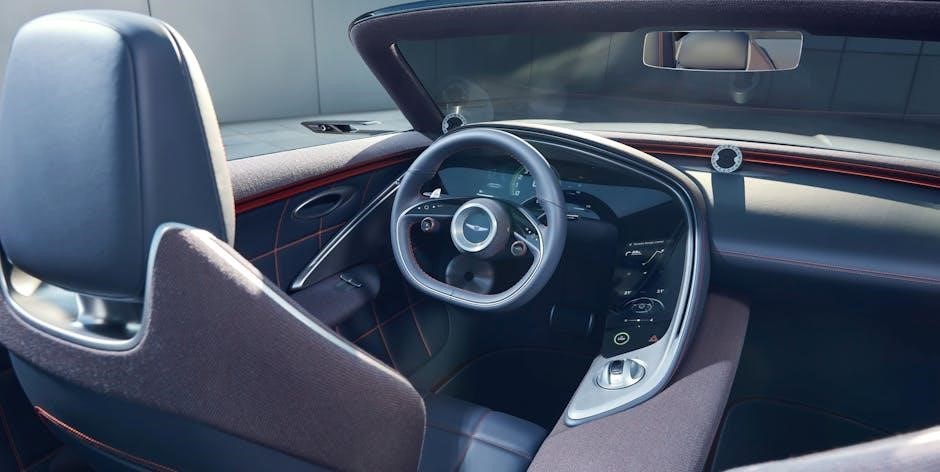Electrical Materials: Names and Pictures
This section will display names and pictures of various electrical materials.
This includes wires, cables, conduits, protective devices, connectors, enclosures and lighting components.
Each material will be presented with a brief description and a visual representation.
Electrical materials are the backbone of any electrical system, enabling the safe and efficient distribution of power.
This section introduces the fundamental materials used in electrical installations.
Understanding these materials is crucial for anyone working in the electrical field.
From conducting wires to insulating tapes, each component plays a vital role.
This introduction will provide a basic overview, setting the stage for more detailed discussions.
This includes essential elements for construction projects, domestic wiring, and various electrical applications.
The goal is to familiarize readers with the basic building blocks of electrical systems.
Basic Wiring Materials
This section focuses on fundamental wiring components.
It includes wires and cables that carry electrical current.
Conduits protect wiring from damage.
Understanding these materials is essential for safe installations.
Pictures and descriptions will be provided.
Wires and Cables: Types and Uses
This section will delve into the diverse world of wires and cables.
We’ll explore various types, including single-core building wire, multi-core industrial cables, and coaxial cables.
Each type has specific uses, from household wiring to industrial applications.
We will discuss the materials they’re made from, such as copper and aluminum, and their insulation properties.
You’ll learn about different cable ratings and how to select the right wire or cable for a project.
Pictures and detailed explanations will help you understand their applications in electrical systems.
Conduits: Protecting Electrical Wiring
This section is dedicated to conduits, which are essential for safeguarding electrical wiring.
Conduits provide a protective pathway for wires, shielding them from damage and environmental factors.
We’ll explore different types of conduits, including PVC, metal, and flexible conduits.
Each type offers unique advantages in terms of durability and installation ease.
You’ll learn about the various fittings used with conduits, such as elbows, couplings, and connectors.
We’ll also cover the proper techniques for installing conduits in different environments.
Pictures and detailed descriptions will help you understand how to use conduits effectively to protect electrical wiring.

Protective Devices
This section focuses on protective devices used in electrical systems.
These devices are vital for safety, preventing overcurrents and potential hazards.
We’ll explore circuit breakers and fuses in detail, explaining their functions.
Circuit Breakers: Overcurrent Protection
Circuit breakers are essential overcurrent protection devices in electrical systems.
They automatically interrupt the flow of electricity when an overload or short circuit occurs, preventing damage to equipment and reducing the risk of fire.
Unlike fuses, circuit breakers can be reset and reused, making them a more convenient and cost-effective solution.
Different types of circuit breakers exist, each designed for specific applications and current ratings.
This section will explore the working principles, types, and selection criteria for circuit breakers to ensure effective overcurrent protection in electrical installations.
Fuses: A Safety Mechanism
Fuses serve as a crucial safety mechanism in electrical circuits, protecting against overcurrents.
These devices contain a metal wire or strip that melts and breaks the circuit when the current exceeds a predetermined level.
This interruption prevents damage to appliances and wiring, minimizing the risk of electrical fires.
Fuses are available in various types and current ratings, each designed for specific applications.
This section will delve into the different types of fuses, their operating characteristics, and the importance of selecting the appropriate fuse for a given circuit.
Proper fuse selection ensures reliable overcurrent protection.

Connecting and Terminating
Connecting and terminating electrical conductors are essential for creating safe and reliable circuits.
This section covers the tools and materials used to join wires, attach them to devices, and ensure proper insulation.
Connectors and Terminals
Connectors and terminals are vital components in electrical systems, facilitating secure and reliable connections between wires and devices.
These components come in various forms, each designed for specific applications and wire gauges.
Common types include wire connectors, such as wire nuts and push-in connectors, which create a twist-on or push-fit connection between two or more wires.
Terminals, on the other hand, are used to attach wires to electrical equipment, like switches, outlets, and circuit breakers.
These can be screw terminals, spade terminals, or ring terminals, each offering a different method of securing the wire to the device.
Proper selection and installation of connectors and terminals are crucial for safety and preventing loose connections, which can lead to overheating and electrical hazards.
Electrical Tape: Insulation and Protection
Electrical tape serves as a crucial insulating and protective barrier in electrical wiring.
Primarily made from vinyl, it provides a non-conductive layer that wraps around electrical connections, preventing short circuits and electrical shocks.
Its adhesive properties ensure a secure and long-lasting bond, conforming to the shape of the connection for optimal insulation.
Beyond insulation, electrical tape also offers mechanical protection, shielding wires from abrasion, moisture, and other environmental factors that could compromise their integrity.
Available in various colors, it’s often used for color-coding wires, aiding in identification and troubleshooting.
While essential for minor repairs and insulation, electrical tape is not a substitute for proper wiring techniques and should be used in conjunction with approved connectors and terminals for safe and reliable electrical connections.
Enclosures and Boxes
Electrical enclosures and boxes play a vital role in protecting electrical components.
They provide a secure housing for connections, splices, and devices.
Ensuring safety and preventing accidental contact with live wires.
Junction Boxes and Gang Boxes
Junction boxes and gang boxes are essential components in electrical wiring systems, providing a safe and organized space for connecting wires. Junction boxes, typically square or rectangular, are used to enclose wire splices, protecting them from damage and accidental contact. Gang boxes, also known as switch boxes, are designed to house switches, outlets, and other electrical devices.
Both types of boxes are crucial for maintaining the integrity and safety of electrical circuits. They prevent exposed wires, reducing the risk of electrical shock and fire hazards. Proper installation and use of junction and gang boxes are vital for compliance with electrical codes.
Enclosures for Electrical Components
Electrical enclosures are protective housings designed to safeguard electrical components from environmental factors, physical damage, and unauthorized access. These enclosures come in various sizes, materials, and designs to accommodate different components and applications. They are crucial for ensuring the reliable and safe operation of electrical systems.
Common enclosure materials include metal, plastic, and fiberglass, each offering specific advantages in terms of durability, corrosion resistance, and insulation properties. Enclosures protect components like circuit breakers, control panels, and power supplies from dust, moisture, and impact. Proper selection and installation of enclosures are essential for maintaining safety and compliance.
Lighting Components
This section will explore different lighting components.
These include various types of lamp holders, lamps, and related accessories.
We’ll provide images and names to help identify these essential parts of electrical lighting systems.
Different Types of Lamp Holders
Lamp holders, also known as sockets, are crucial components in any lighting circuit.
They provide the mechanical support and electrical connections necessary for lamps to function.
Different lamp holders are designed to accommodate various lamp types and sizes, ensuring proper fit and secure electrical contact.
Common types include Edison screw base, bayonet mount, and pin-type lamp holders.
Each type has unique features and is used in specific applications.
Understanding the different types of lamp holders is essential for selecting the right one for your lighting needs.
Proper installation and maintenance are crucial for safety and optimal performance.
Insulation Materials
Electrical insulation materials are essential for safety in electrical systems.
They prevent current leakage and protect against electric shock.
Various types exist, each with specific properties and applications.
Proper selection is crucial for reliable performance.
Types of Electrical Insulation
Electrical insulation is crucial for safety and preventing short circuits.
Several types of insulation materials are available, each with unique properties.
PVC (Polyvinyl Chloride) is a common and cost-effective option for general wiring.
XLPE (Cross-linked Polyethylene) offers higher temperature resistance and durability.
Rubber insulation provides flexibility and is suitable for harsh environments.
Teflon insulation is known for its exceptional heat and chemical resistance.
Mineral insulation can be used in fire-resistant cables.
Selecting the right insulation depends on the application’s voltage, temperature, and environmental conditions.

Other Essential Materials
Beyond primary components, several other materials are essential in electrical work.
These include cable ties for organization, labels for identification, and lubricants for smooth wire pulling.
Proper selection ensures efficient installations.
Cable Ties: Organizing Wires
Cable ties, also known as zip ties, are indispensable for managing and organizing electrical wires and cables.
They bundle wires together, preventing tangling and ensuring a neat, professional appearance.
Available in various sizes and materials, cable ties can withstand different environmental conditions, including heat and UV exposure.
Proper use enhances safety by reducing tripping hazards and simplifying troubleshooting.
Securely fastened cables also minimize the risk of damage and ensure that electrical systems function efficiently.
They help maintain a tidy workspace.

Tools for Electrical Work
This section will cover the essential tools required for electrical installations and repairs.
Each tool will be described with its function, purpose and a visual aid to help identify it.
Essential Tools for Electrical Installations
Electrical installations require specific tools to ensure safety and accuracy.
These tools are crucial for cutting, stripping, connecting, and testing electrical components.
A basic set includes wire strippers, pliers, screwdrivers, voltage testers, and measuring tapes.
Specialized tools like conduit benders, fish tapes, and multimeters are also beneficial for complex tasks.
Proper tool maintenance is essential for longevity and reliable performance.
Using the correct tool for each task minimizes the risk of damage or injury;
Understanding the function of each tool is critical for successful electrical work.
Always prioritize safety when working with electrical tools and equipment.
